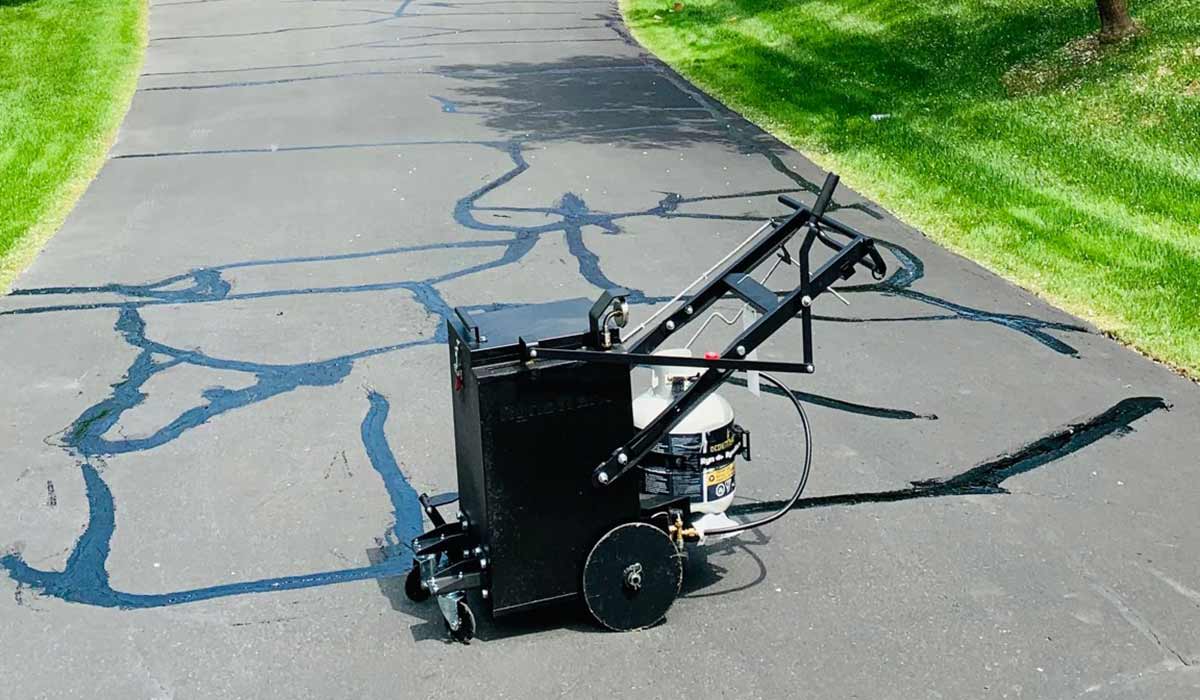With the sun, rain, ice and traffic constantly assaulting your asphalt surface, cracks developing in the blacktop is an all too common experience for countless property owners and managers – one that can lead to greater damage and even hazardous conditions!
When they do appear, it’s important to repair them as soon as possible to prevent them from worsening and leading to more extensive, and expensive, repairs. Doing so effectively requires the right preparation—otherwise, you'll be wasting your time and your asphalt will continue to deteriorate.
Here are several useful tips to help you properly prepare a crack for filling:
1. Clear Debris
The first step to preparing an asphalt crack for filling is making sure that the crack itself and surrounding areas are free of debris. This includes loose asphalt, refuse and vegetation. Failing to remove these impediments will negatively impact the crack fill’s ability to properly adhere to the pavement.

Video: Three ways to clean an asphalt crack
Stick around until the end of the article to see our recommendations for crack repair equipment that can make this step much easier! Otherwise, it can be achieved by hand with a simple broom and wire brush.
Want to learn everything there is about maintaining asphalt surfaces? Take our free Pavement Asset Management course.
2. Make Sure the Cracks Are Dry
Similar to removing debris, the crack must be dry in order for the filler to correctly adhere to the asphalt. As such, avoid filling cracks during or within a day of wet weather. In addition to monitoring the weather, make sure to check if the cracks are in range of any sprinkler systems (whether directly or through runoff), and turn them off if necessary.
3. Measure Your Cracks
The next step to ensuring you are well prepared to accurately seal your asphalt cracks is measuring them, as their dimensions will impact how you go about repairing them and the supplies you will need.
Start by measuring the width.
The width of the crack will determine whether it can be filled with rubberized crack sealer, or if other crack filling materials are necessary.
Here are some guidelines:
-
- Less than .5 inches wide: These cracks are thin enough to be repaired with cold pour crack filler.
- Between .5 and 2 inches wide: These cracks require hot pour crack filler and the hot asphalt crack filler machine to apply it.
- Wider than 2 inches: Cracks wider than two inches should be treated as potholes, and will require cold asphalt patch to be repaired effectively.
Next, measure the depth.
Cracks measuring less than .5 inches deep can typically be filled without additional preparation. Deeper cracks, however, should first be filled with a layer of sand until they reach the proper depth.
Lastly, measure the length.
The total length of all the cracks in your asphalt surface will determine how much crack fill supplies you need to purchase.
Unsure how to take this measurement or how much crack filler you’ll need? Use our crack fill calculator.
4. Invest in the Right Equipment
The aforementioned steps can be executed by hand, but doing so can be time consuming and does not always yield the best result. The equipment below, however, will improve the quality and efficiency of your preparation efforts.
Rip through cracks & crevices at 5 feet every 15 seconds with the Billy Goat Grazor.
The 6HP Billy Goat Wheel Blower is perfect for pavement surface prep with easy debris and leaf removal.







